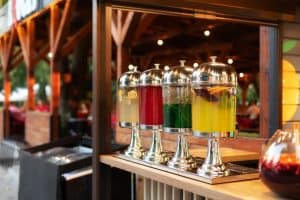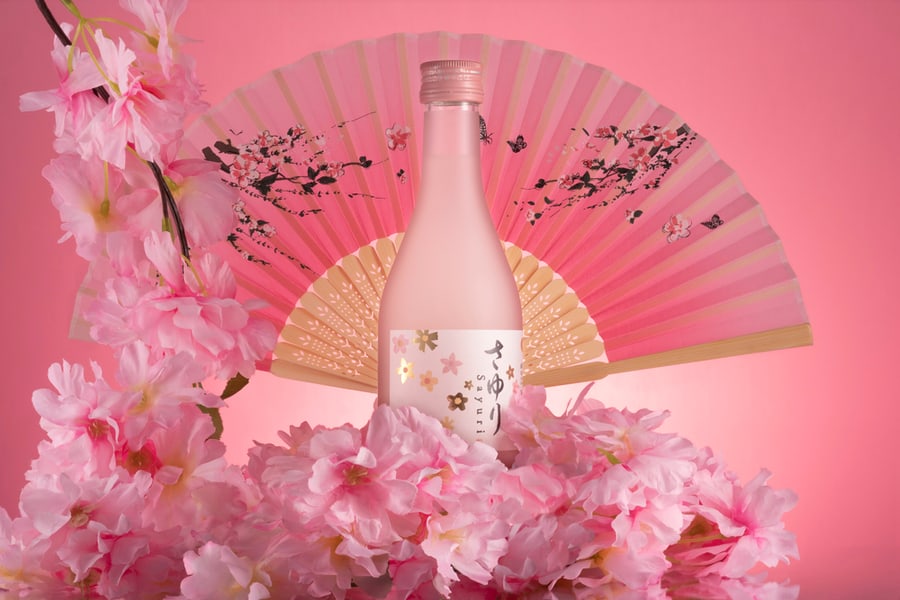
The ancient art of drinking sake is a tradition that’s been passed down in Japan for generations. Today, however, sake is beloved all around the world, and there are almost no rules on how to enjoy this light alcoholic beverage.
Let’s start from the beginning, shall we? Sake is fermented rice wine. The production process is almost like that of beer but with a few variations. There are different types of sakes, some of which we’ll elaborate on in this article.
Nigori, which translates to ‘cloudy’ in Japanese, is a cloudy version of the regular sake (more about what makes it cloudy in the next subheading).
Also called unfiltered sake, nigori sake makes an excellent dessert drink. It has a mild, aromatic flavor that compliments many foods. Nigori sake usually has 12-17% ABV.
So how do you drink nigori sake?
Don’t shake the bottle. Instead, slightly turn it up and down to mix the sediments. Serve it at the right temperature and with the right food, and you’re good to go. You can also mix nigori sake in cocktails.
Let’s dive right into everything you need to know about nigori sake.
How Nigori Sake Is Made
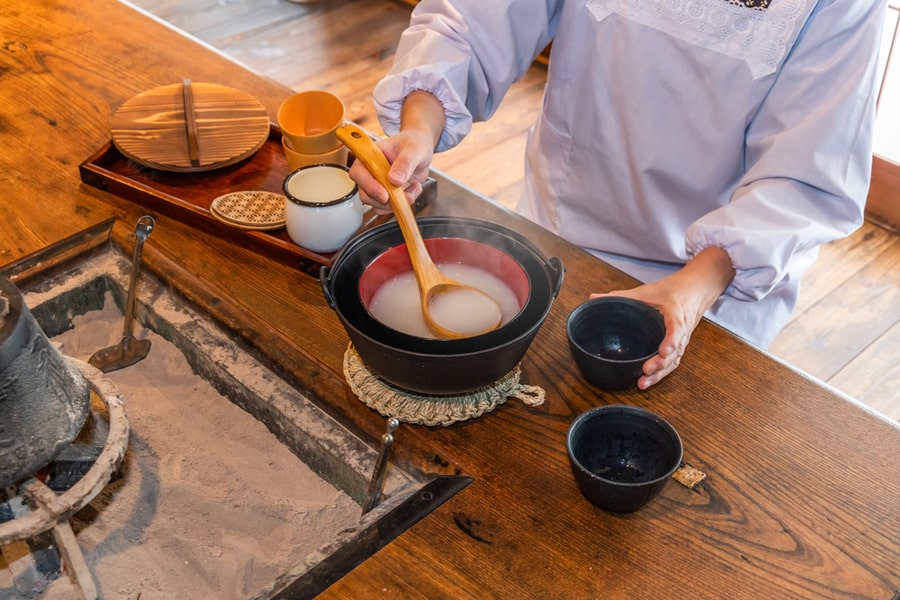
Early records show that sake was initially nigori. Farmers made sake the nigori way before it was banned in Japan. Manufacturers wanted to produce clear wine that looked like European wines, so for a period, only clear sake (sumizake) was produced.
However, the ban was lifted many years later, and Japan started to produce this cloudy wine again.
Like all other sakes, nigori sake is simply fermented rice, but what differentiates nigori from other sakes is that nigori has unfermented rice sediments (lees) called “kasu” that give it a cloudy appearance.
To make sake, the mash from the sake-making process called the “morimi,” is passed through mesh bags. This results in a clear liquid.
For nigori sake, the morimi is filtered with a mesh with broader holes. This allows fine rice particles to mix with the end product and influence the texture, color, and taste. This gives it a cloudy appearance and a creamier, full-bodied, softer, and rounded taste.
Some manufacturers first produce sumizake and then add a measured amount of kasu to give it the nigori sake look and taste.
Some gourmets argue that nigori sake isn’t unfiltered since it still goes through filtration, but there’s no doubt that this drink is easy on the palate and great tasting.
How To Drink Nigori Sake
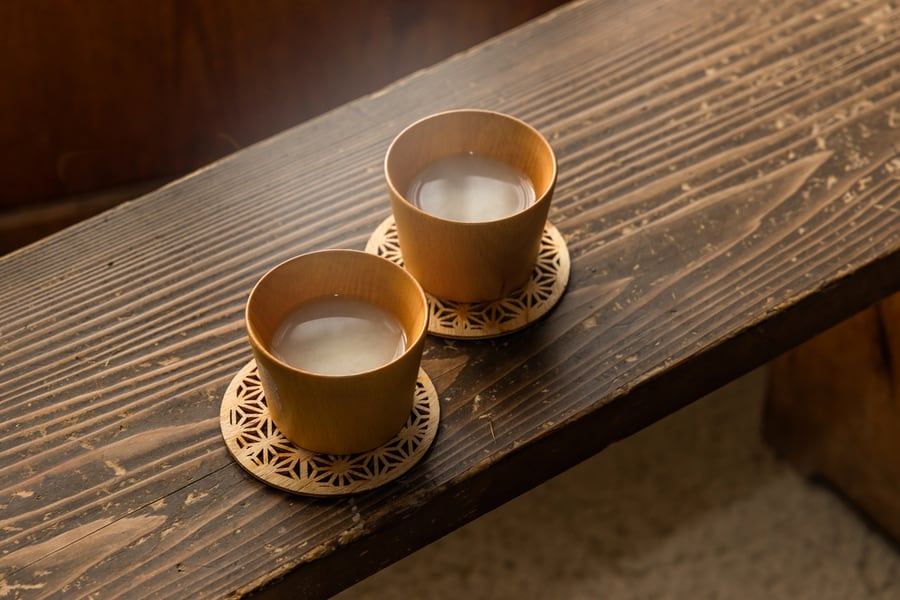
Nigori sake is usually sweeter and richer than the other types of sake. It has a creamy texture with a slight sweetness and a smooth finish. The taste has notes of banana, coconut, and honey, with a light floral aroma. It is slightly tart and has a hint of nuttiness.
Here are some guidelines to help you enjoy sake in the best way possible.
Don’t Shake or Stir
Nigori sake that has been left for a while in storage will settle, so before opening the bottle and pouring yourself a glass, you should mix it a little bit.
Don’t shake it too violently, it’ll lose its creamy texture and only become more cloudy. Gently put both hands at both ends of the bottle and turn it both ways. This will help your sake retain its creamy texture and create a uniform environment in the bottle.
Drink It at the Right Temperature
Some people heat up nigori sake during the winter to get a warm, sweet beverage, but nigori sake is best served chilled. If you want some figures, between 4°C and 15°C is optimal.
Make a Cocktail
If you don’t want to drink your nigori sake alone, there are many cocktails you can try.
Some Nigori Sake Cocktails
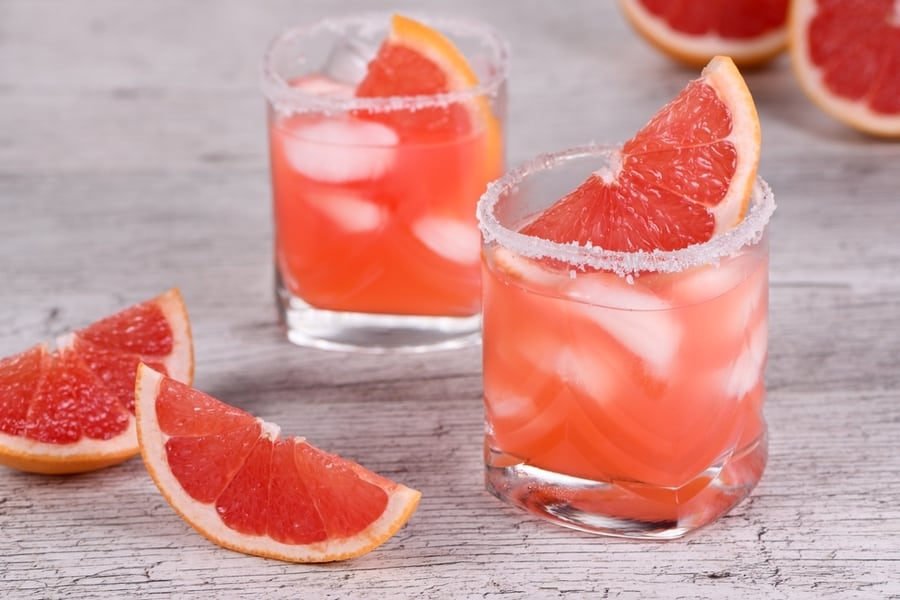
Here are some nigori sake cocktails you can try at home.
Sake Grapefruit Cocktail
Ingredients
- 3 ounces nigori sake
- 2 ounces gin
- 3 ounces grapefruit juice
- ⅛ tsp grated ginger root
- Rosemary sprigs for garnish
- Ice cubes
Instructions
- In a cocktail shaker containing ice cubes, add the nigori sake, grapefruit juice, gin, and ginger root. You may have to improvise with the proportions.
- Shake for over 30 seconds and strain into a cocktail glass.
- Garnish with rosemary sprigs, and add more ice if you want. Enjoy.
Grapefruit Honey Sake Cocktail
This cocktail tastes like a ray of sunshine, so it’s perfect for a hot summer day.
Ingredients
- 3 ounces freshly squeezed grapefruit juice
- 4 tbsp honey
- ¼ cup sugar
- 3 ounces nigori sake
- Ice cubes
Instructions
- Coat the rim of your glass with sugar.
- In a mixing glass, add the grapefruit juice and honey and stir until even.
- Pour the mix into your serving glass and top it off with sake.
- Add ice.
- Garnish with a grapefruit or orange wedge and enjoy.
Food Pairings With Nigori Sake
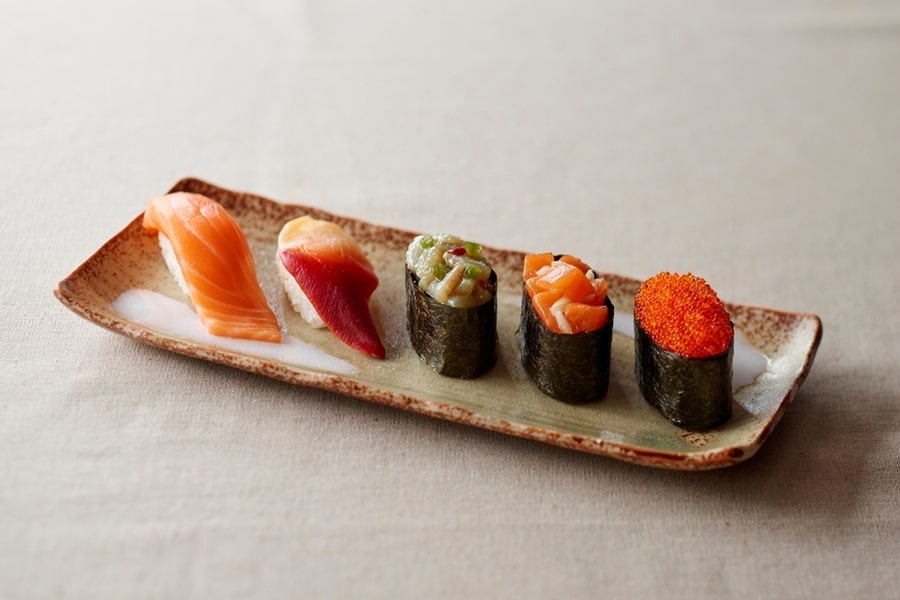
Pairing nigori sake with food can be a great way to enhance the flavor of both the sake and the food. The sweet, creamy taste of nigori sake pairs best with foods that are salty, fatty, and umami-rich. Here are some suggested pairings for nigori sake:
- Sushi: The creamy texture of nigori sake pairs well with the umami-rich flavors of sushi. Try pairing nigori sake with sushi rolls that have fatty fish like salmon, tuna, or mackerel.
- Grilled Fish and Seafood: The sweetness of nigori sake complements the smoky, salty flavors of grilled fish and seafood.
- Tempura: Sweet nigori sake offsets the salty crunch of tempura.
- Rich Cheese: Nigori sake pairs well with the creamy, salty flavors of rich cheese. Try pairing nigori sake with aged hard cheeses like parmesan or cheddar.
A Brief History of Nigori Sake
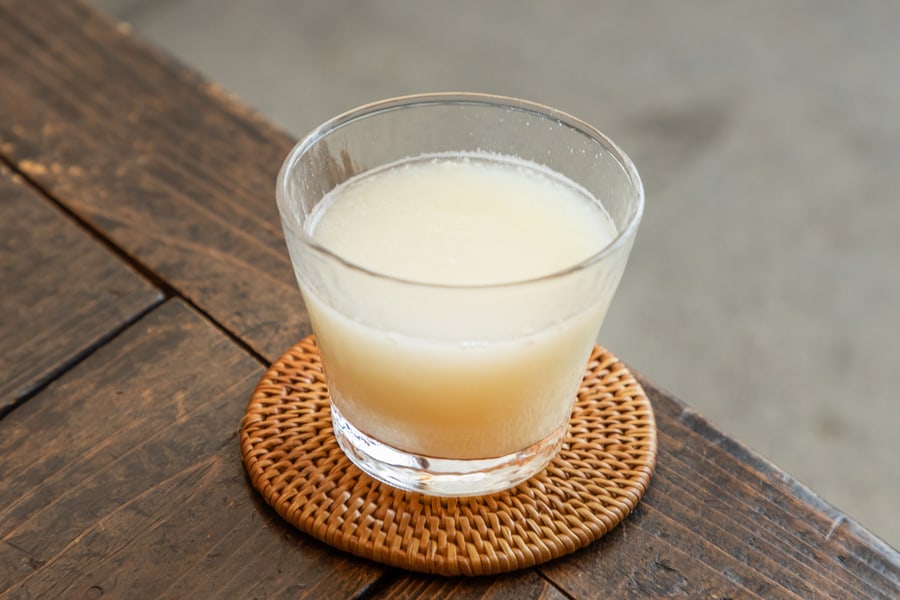
Nigori sake was originally produced in Japan as a way to make sake more affordable. It was also a way to make use of the grains that were leftover after the production of other sake styles. The combination of the sweet and creamy flavors of nigori sake made it a popular choice for the samurai of the Edo period, who would enjoy it in their downtime.
The Japanese have a variety of vessels for enjoying sake which is collectively called reishu-hai. Most but not all of them are made of glass.
They’re often stored in a wooden box known as a “masu.” Masu was initially used to measure rice, but the Japanese evolved to drink sake directly from masu at home and during ceremonies.
In modern times, nigori sake has become increasingly popular for its unique flavor and texture. It pairs well with many dishes and is often used to make cocktails.
As the popularity of nigori sake has grown, so too have its variations of it, with some producers adding fruit, herbs, and spices to create unique flavors and aroma profiles.
Other Types of Sake
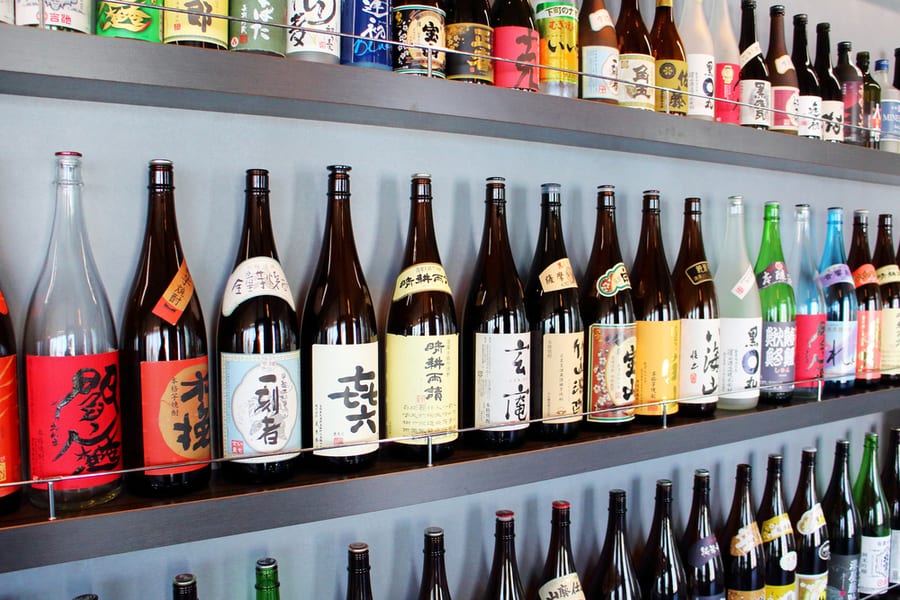
So we know sake is fermented rice wine, but there’s much more to making sake than meets the eye. To make sake, rice is often polished to get rid of the bran.
The more you wash off the bran, the clearer the flavor. Also, the more you polish, the sweeter it’ll become and the more expensive it’ll be. Now, there are different types of sakes depending on the amount of rice polished and some other factors.
You already know nigori sake. Here are some other sakes you should know.
Junmai Sake
When you see junmai on a bottle of sake, know that it refers to sake made of only water and rice. No other spirits or ingredients were added during or after the fermentation process.
Junmai sake is usually milled (polished) to at least 70% remaining. This means that about 30% of the rice has been polished, and the remaining 70% maintains its original size.
Ginjo Sake
Ginjo refers to sake in which 40% of the rice used to produce the sake has been polished, or 60% of the grains are remaining. It has a light, smooth taste and a great aroma.
Dai-Ginjo Sake
Dai-Ginjo is often referred to as the highest-quality sake on the market. Since it’s more polished than the other sakes, it’s usually sweeter and more expensive.
The law regulating Dai-Ginjo sake says 50% of the rice should be milled and 50% remaining, but manufacturers go past this to make the sake even more high quality.
Namazake
This is sake made with unpasteurized alcohol. Sake is usually pasteurized twice to let it last longer. Namazake, however, is sake in its raw form. All types of sake can be Namazake, and brewers make it so you can get a variety of flavors you won’t get in regular sake.
Namazake has to be always chilled so the aroma and flavor of the drink won’t change.
Bottom Line
Don’t shake your nigori sake aggressively, turn it over a few times to mix the sediments. Serve your sake chilled, and enjoy. Or you can decide to make a cocktail with it, it’s totally up to you.







